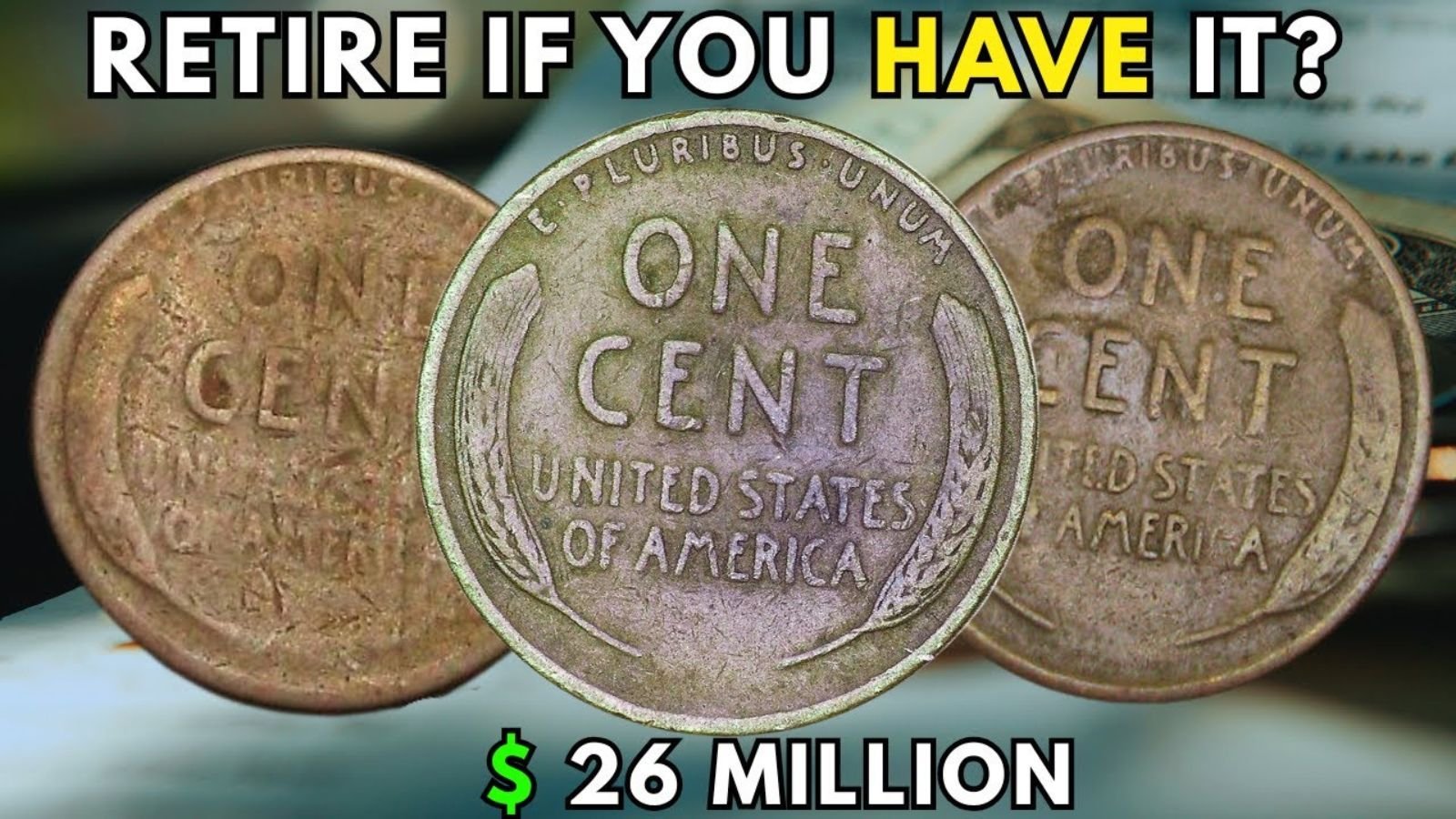Pennies are the most underestimated coins in circulation. Most people won’t think twice before tossing them aside or into a coin jar. But those who know what to look for understand that certain pennies, especially Wheat Steel Pennies, can be worth a surprising amount of money.
The United States only produced steel pennies for one year—1943—but these coins have become legendary among collectors. What’s more, many wheat pennies from the 1940s and 1950s are increasingly gaining attention. If you own a 1943 steel cent or coins from 1945, 1950, 1951, 1957, or 1958, you could be holding a numismatic gem.
In this guide, we’ll break down the history, value, and characteristics of Wheat Steel Pennies, as well as some valuable copper-based wheat cents that remain sought after in 2025.
What Are Wheat Steel Pennies?
Wheat Steel Pennies refer specifically to the 1943 Lincoln cents made from steel coated with zinc. Due to a copper shortage during World War II, the U.S. Mint made the bold decision to use steel instead. These coins are easy to spot thanks to their silvery appearance—totally different from the familiar copper tone.
While the steel composition only lasted for one year, these coins remain among the most collectible Lincoln cents due to their historical significance and visual uniqueness.
Why Were Wheat Pennies Made of Steel in 1943?
During World War II, copper was a critical war material needed for shell casings, electrical wiring, and other military applications. To conserve copper, the U.S. Mint experimented with alternative materials. In 1943, steel coated with zinc was chosen for mass production.
Over 1 billion Wheat Steel Pennies were produced across three mints:
- Philadelphia (no mint mark)
- San Francisco (S)
- Denver (D)
These 1943 steel cents were never meant to be permanent. In 1944, the Mint resumed production of copper-based coins, using recycled shell casings from the war.
The 1943 Steel Wheat Penny
| Feature | Details |
|---|---|
| Composition | Zinc-coated steel |
| Weight | 2.7 grams |
| Mintage | Over 684 million (Philadelphia) |
| Value | $0.25 – $30+ depending on grade |
The most common of the Wheat Steel Pennies, the 1943 steel penny is easy to find but still collectible. If you find one in high mint state condition (MS65 or higher), it could be worth $10–$30 or more. Rust and corrosion are common due to the steel core, so pristine examples carry a premium.
Look out for any that appear to have a copper color—those are extremely rare off-metal errors worth thousands.
The 1943-D Steel Wheat Penny
| Feature | Details |
|---|---|
| Mintage | ~217 million |
| Mint Mark | “D” below the date |
| Value | $0.35 – $40+ depending on grade |
The 1943-D Wheat Steel Penny was produced at the Denver Mint and is slightly scarcer than the Philadelphia issue. While still common in circulated condition, collectors prize coins that show strong luster and minimal surface spotting.
Some rare error versions of the 1943-D exist, including a famous 1943-D over D variety and an ultra-rare 1943-D bronze planchet error.
The 1943-S Steel Wheat Penny
| Feature | Details |
|---|---|
| Mintage | ~191 million |
| Mint Mark | “S” below the date |
| Value | $0.50 – $60+ depending on condition |
The 1943-S Wheat Steel Penny, from the San Francisco Mint, had the lowest mintage of the three. It’s considered slightly more collectible and commands higher prices in mint condition. Sharp-struck examples are less common, so finding one in gem condition could make you some serious money.
Some 1943-S steel pennies also feature mint errors like repunched mint marks (RPMs), making them even more desirable.
Post-1943 Wheat Pennies to Know
While 1943 was the only official year for Wheat Steel Pennies, many copper wheat cents from the 1940s and 1950s also have collectible value. Below are notable years to look for:
1945 Wheat Penny
| Feature | Details |
|---|---|
| Composition | 95% Copper |
| Mintage | ~1.04 billion |
| Value | $0.05 – $5+ |
Although not rare, the 1945 wheat penny is still a wartime coin and is over 75 years old. High-grade or error varieties (such as doubled dies) can increase value significantly.
1950 Wheat Penny
| Feature | Details |
|---|---|
| Composition | 95% Copper |
| Mintage | ~272 million |
| Value | $0.10 – $25+ |
The 1950 wheat penny is one of the more common later-date issues but is still collectible, especially in high mint-state grades. It’s also sought after by those trying to complete full Lincoln Wheat collections.
1951 Wheat Penny
| Feature | Details |
|---|---|
| Composition | 95% Copper |
| Mintage | ~286 million |
| Value | $0.10 – $20+ |
Another post-war penny, the 1951 wheat penny holds modest value unless in pristine condition. However, some error varieties—like off-center strikes or die cracks—are worth watching for.
1957 Wheat Penny
| Feature | Details |
|---|---|
| Composition | 95% Copper |
| Mintage | ~1.33 billion |
| Value | $0.05 – $15+ |
The 1957 wheat penny is very common, but again, high-grade versions (especially with full red luster) can attract collector interest. It’s also popular with beginners who want to own an older Lincoln cent without breaking the bank.
1958 Wheat Penny
| Feature | Details |
|---|---|
| Composition | 95% Copper |
| Mintage | ~252 million |
| Value | $0.05 – $20+ |
The 1958 wheat penny was the final year of the wheat design. In 1959, the reverse changed to feature the Lincoln Memorial. Because of this, the 1958 issue is important historically and in high-grade can fetch a good price.
Look out for the 1958 Doubled Die Obverse (DDO) variety—it’s one of the most valuable Lincoln cent errors, potentially worth thousands.
How to Identify a Wheat Steel Penny
Here’s how to know if you have one of the rare Wheat Steel Pennies:
- Magnet Test: Steel pennies are magnetic—copper ones are not.
- Color: Steel pennies are silver/gray; copper ones are brown or red.
- Mint Mark: Check below the year for D or S.
- Weight: Steel pennies weigh around 2.7 grams; copper pennies weigh 3.11 grams.
- Luster: Zinc-coated steel should have a bright, silvery sheen unless oxidized.
Storing and Selling Wheat Steel Pennies
Steel pennies are especially prone to rust, so storage matters:
- Use coin flips or airtight capsules to prevent moisture contact.
- Avoid PVC-based holders, which can corrode the coin over time.
- Handle with gloves to prevent skin oil from damaging the coin surface.
When it’s time to sell:
- Get a professional appraisal for rare varieties or mint errors.
- Consider grading with NGC or PCGS if the coin is in excellent shape.
- Use auction sites or coin dealers with a solid reputation.
Conclusion
Whether you’re a seasoned collector or just going through Grandpa’s coin jar, finding Wheat Steel Pennies—especially from 1943, 1943-D, or 1943-S—can be exciting and profitable. Even more common dates like 1945, 1950, 1951, 1957, and 1958 have collector interest and may be worth more than you think.
The key is condition, rarity, and knowing what to look for. With the right eye and a little bit of knowledge, even a penny could become your first step into the world of rare coins and hidden wealth.
Some Important Link
| Telegram Group | Click Here |
| WhatsApp Group | Click Here |
| Home Page | Click Here |










